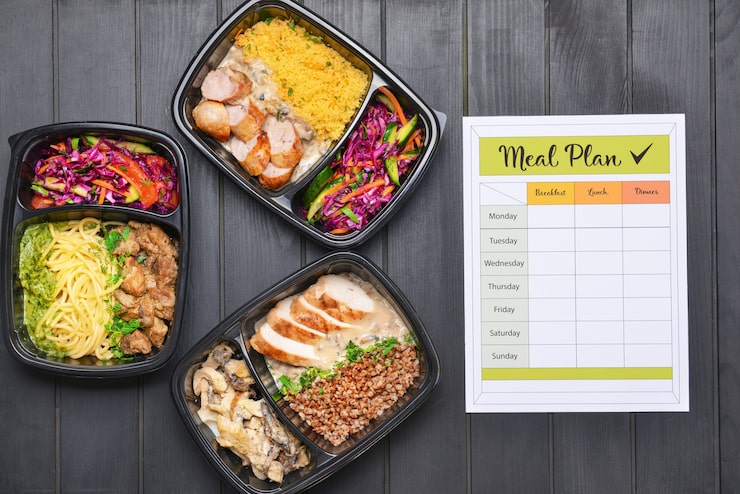For most students, university or college life is a juggling act between studies, part-time work, and maintaining a social life. Add to that the challenge of eating well without overspending, and you’ve got a daily puzzle to solve. But here’s the good news: Healthy Eating for Students on a Budget is 100% possible — and it doesn’t have to be boring or expensive.
This guide, powered by the student-first mindset of Studelicious, walks you through how to balance nutrition, cost, and time. Whether you’re living in residence, renting a shared apartment, or commuting, the strategies below will help you stay healthy without draining your wallet.
Why Healthy Eating Matters in Student Life
Healthy eating is not just about salads and smoothies. It’s about fueling your brain, boosting your immune system, and maintaining energy levels — all essential when you’re buried under lectures and deadlines.
Students who prioritize good nutrition often:
- Perform better academically
- Sleep more consistently
- Experience better mental health
- Have more stable energy levels throughout the day
But let’s be real: it’s hard to maintain a balanced diet on a tight budget. That’s why we need practical, realistic strategies.
Strategy 1: Embrace Affordable Meal Packs
One of the easiest ways to control your spending and your nutrition is to plan weekly affordable meal packs. These are pre-planned bundles of meals designed for students.
Studelicious is among the growing Canadian platforms offering curated meal packs that are cost-effective, balanced, and delicious. These packs usually include:
- Whole grains (rice, oats, pasta)
- Lean proteins (beans, eggs, tofu, canned tuna)
- Frozen or seasonal vegetables
- Easy snacks like yogurt or granola bars
The goal isn’t to eat fancy — it’s to eat smart. Buying in bulk and preparing meals in advance reduces daily costs and food waste.
Strategy 2: Use Diet-Friendly Apps
Technology is your best friend when you’re trying to eat better on a student schedule. Using diet-friendly apps can help you track nutrients, find cheap recipes, and avoid impulsive takeout orders.
Apps like Studelicious provide:
- Quick meal suggestions based on what you already have in the fridge
- Grocery lists tailored to your weekly budget
- Calorie and nutrition tracking for better awareness
- Recipe filters for dietary needs (vegan, halal, gluten-free, etc.)
Strategy 3: Think Beyond the Kitchen — Student Wellness Canada
Healthy eating isn’t just about food. It’s part of a bigger picture: student wellness in Canada. This includes sleep hygiene, hydration, physical activity, and emotional balance.
When students start treating their diet as part of their overall wellness strategy, they begin to see lasting results — better focus, improved mood, and even fewer sick days.
That’s why brands like Studelicious don’t just talk about recipes. They promote holistic wellness habits for Canadian students, including:
- Easy meal prep routines
- Mindful eating practices
- Student-friendly nutrition education
- Community forums for shared recipes and motivation
Case Study: A Week in the Life of a Budget-Conscious Student
Let’s imagine “Amira,” a second-year student living in Toronto on a limited budget.
- She uses Studelicious to plan her meals every Sunday night.
- Her grocery bill is under $50/week thanks to affordable meal packs.
- She preps her breakfast (overnight oats) and lunch (rice bowls) in advance.
- She avoids fast food by using a diet-friendly app to get recipe ideas on the go.
- She tracks her expenses and nutrition weekly — all inside the Studelicious app.
Result? She eats three balanced meals a day, spends less than her peers, and has more energy during midterms. That’s the power of structured meal planning.
Final Tips for Healthy Eating for Students on a Budget
- Stick to seasonal and frozen vegetables — they’re cheaper and last longer.
- Keep your pantry stocked with “base ingredients” like rice, oats, and beans.
- Always have a few emergency meals ready to go (e.g., pasta with canned sauce).
- Track your spending habits on food for at least one month.
- Use apps like Studelicious to keep everything organized in one place.
Conclusion
Healthy Eating for Students on a Budget is not a dream — it’s a lifestyle choice. With a bit of planning, smart grocery shopping, and the right tools, students can eat better, save more, and live healthier.
Studelicious is here to make that journey easier, especially for Canadian students balancing tuition, rent, and self-care. Whether it’s affordable meal packs, food budget hacks, or personalized diet-friendly apps, the future of student eating is brighter than ever.
Frequently Asked Questions
1. Can students really eat healthy on a tight budget?
Yes! With meal planning, bulk buying, and smart apps like Studelicious, healthy eating is affordable and achievable.
2. What are affordable meal packs?
They are pre-planned bundles of ingredients designed to create several meals at a low cost, helping students save time and money.
3. How do diet-friendly apps help students?
They offer cheap recipe ideas, grocery lists, nutrition tracking, and portion planning — perfect for busy student schedules.
4. Is Studelicious only for Canadian students?
Studelicious is designed primarily for students in Canada, with localized grocery suggestions and regional wellness support.





